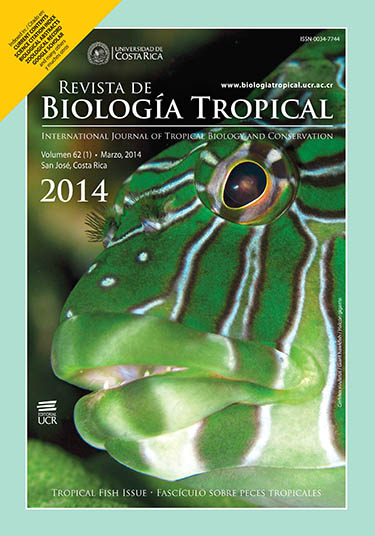Abstract
The dry Chaco, a semiarid thorn forest, is experiencing some of the highest deforestation rates globally, coupled with the fact that small-bodied fish are at the highest risk of extinction, the killifish inhabiting this region may be some of the most threatened taxa. Yet, aspects of ecology and life history for Neotropical killifishes in the Bolivian Gran Chaco region are completely lacking, and basic life-history data is of critical importance for the design and implementation of conservation measures. Collections were conducted during the early (January 2011) and late (March-April 2011) rainy season using an area-based sampler and dip net surveys. Fish standard length and body depth were measured as well as the number of oocytes per size class, mean oocyte diameter per size class, and total fecundity for the females of each species. A total of 490 specimens of rivulids were captured; Austrolebias vandenbergi: 85 females, 105 males and 39 juveniles, and N. ornatipinnis: 62 females, 113 males, 86 juveniles. Sexual size dimorphism, absolute fecundity, oocyte developmental stages, oocyte diameter, and population sex ratios were determined for each species. Both species exhibited sexual size dimorphism. Male A. vandenbergi exhibited longer standard length (mean±SD; males: 27.07±3.89mm, females: 23.6±2.02mm) and body depth (males: 8.9±1.7mm, females: 7.2±1.1mm) as compared to females. Male N. ornatipinnis had a similar pattern for both standard length (males: 26.0±7.1mm, females: 19.1±5.83mm) and body depth (males: 5.6±1.9mm, females: 4.7±1.0mm). Austrolebias vandenbergi had fewer and smaller oocytes per female (47±31.6) than N. ornatipinnis (206±131.2). There was a positive relationship between fecundity and female body size in both species. The presence of multiple developmental stages of oocytes (immature, maturing, and mature) suggest that both species of rivulids exhibit fractional spawning, a reproductive strategy that enhances reproductive success in these extreme habitats. Neofundulus ornatipinnis exhibited a higher mean oocyte diameter for all three developmental stages (immature, maturing, and mature) as compared to A. vandenbergi.


